The New (Productive) Garden City
Re-integrating housing and food production
One of the negative effects of industrial globalism is the dispersal of good growing sources around the world, and the dependency on expensive and unsustainable shipping and transportation. There is these days a worldwide movement to grow food more regionally, with crops appropriate for the climate. There is also a growing desire for people to be more connected to their food sources and participate in gardening. We propose a new way of creating communities that are centered on food production. We have used the original garden city of Letchworth, designed by Unwin and Parker, as a prototype for this new additional development.
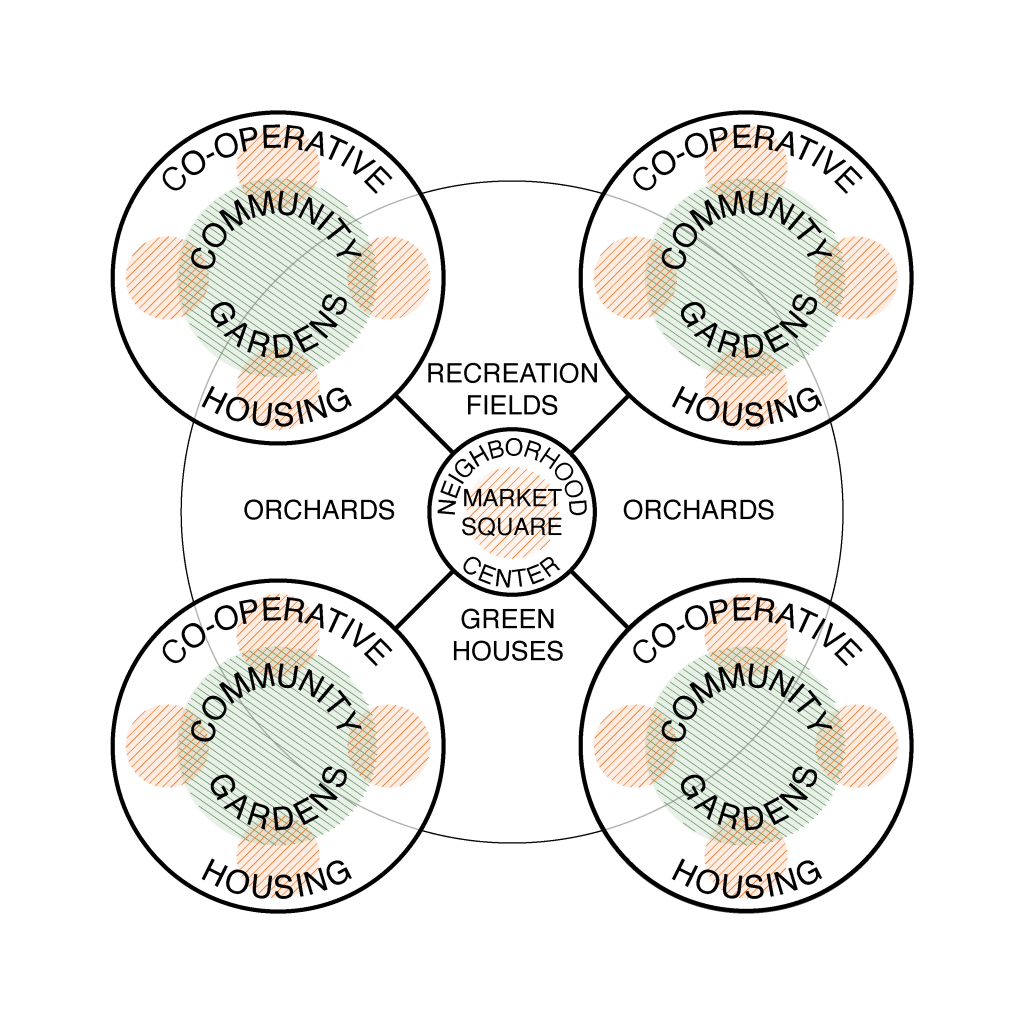
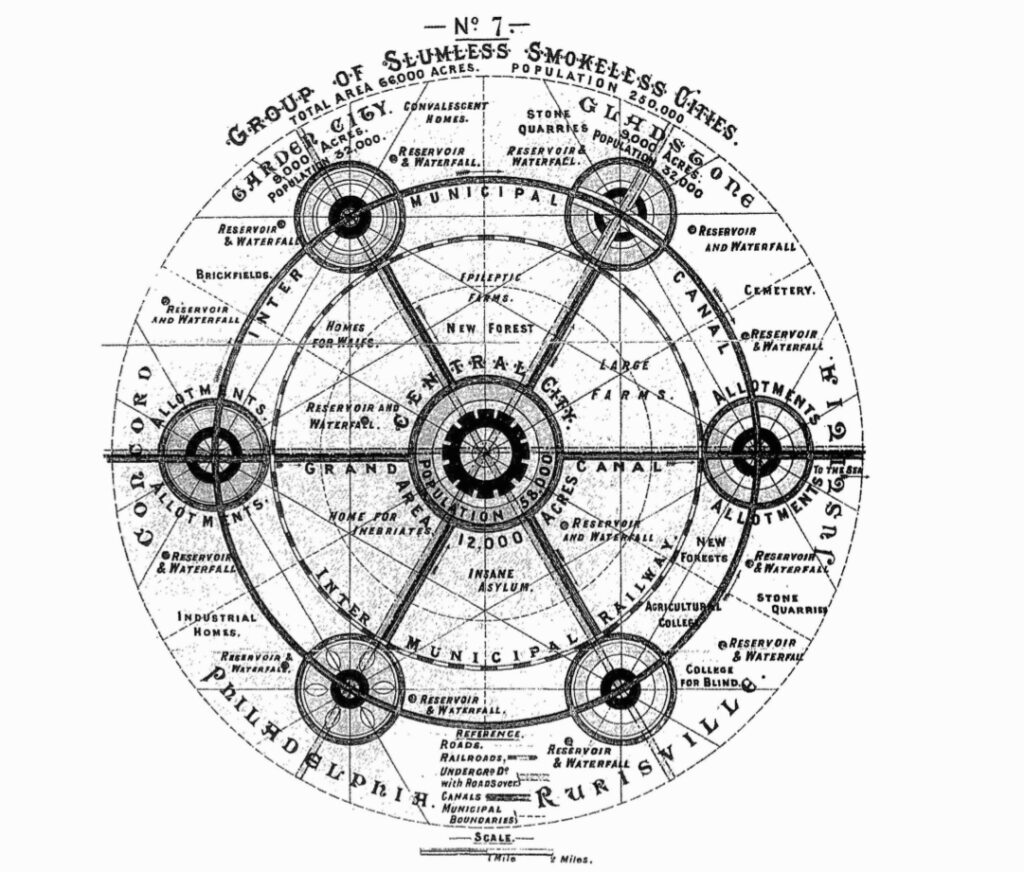
The Garden City Diagram
Dutton Architect’s garden city diagram (above) is an update of that originally proposed by Ebeneezer Howard (below) in his seminal book “Garden Cities of Tomorrow.” This book influenced the first garden cities by Unwin and Parker in Hampstead and Letchworth. The organization of both is based on a clear center with concentric clusters of housing and other uses. We propose that the space in-between are used for food-growing, replacing some of the ‘out-dated’ needs for “insane asylums,” “Home for Inebriates,” and “Homes for Waifs.” The idea of a distribution of open space types is still an integral part of a garden city however.
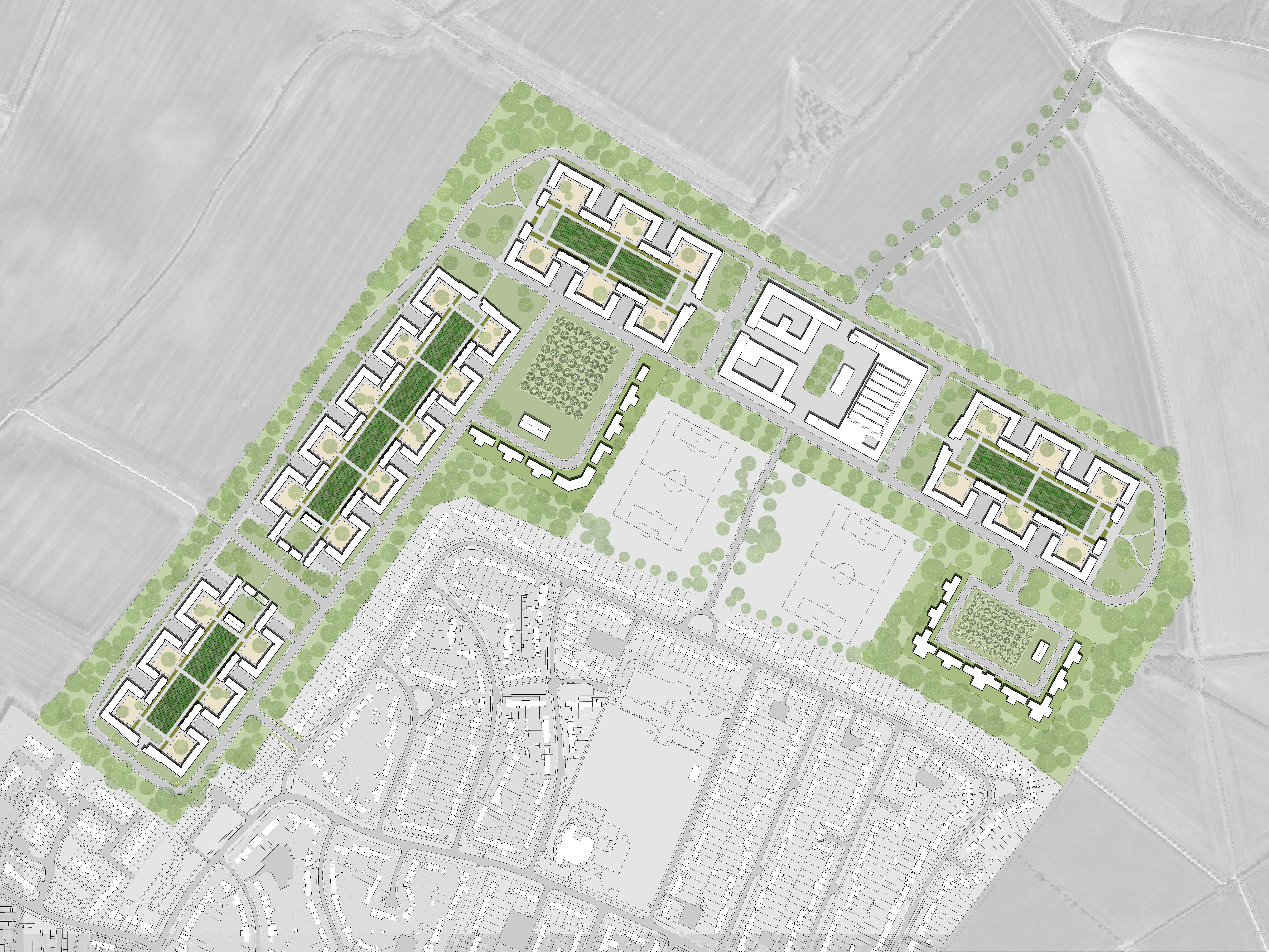
A neighborhood organized around residential farming clusters
Our proposal creates clusters of housing around large garden courts; each cluster is a community that literally defines vegetable gardens. There are also areas within the development for groves of fruit trees. At the center of the development- the entry from the main road- is a public square and commercial center, anchored by a covered market. Adjacent to it are existing recreational fields. Together, the edges of all the garden living clusters form a hard boundary between the development and the agricultural fields beyond. In this way, an antidote to suburban sprawl is proposed.
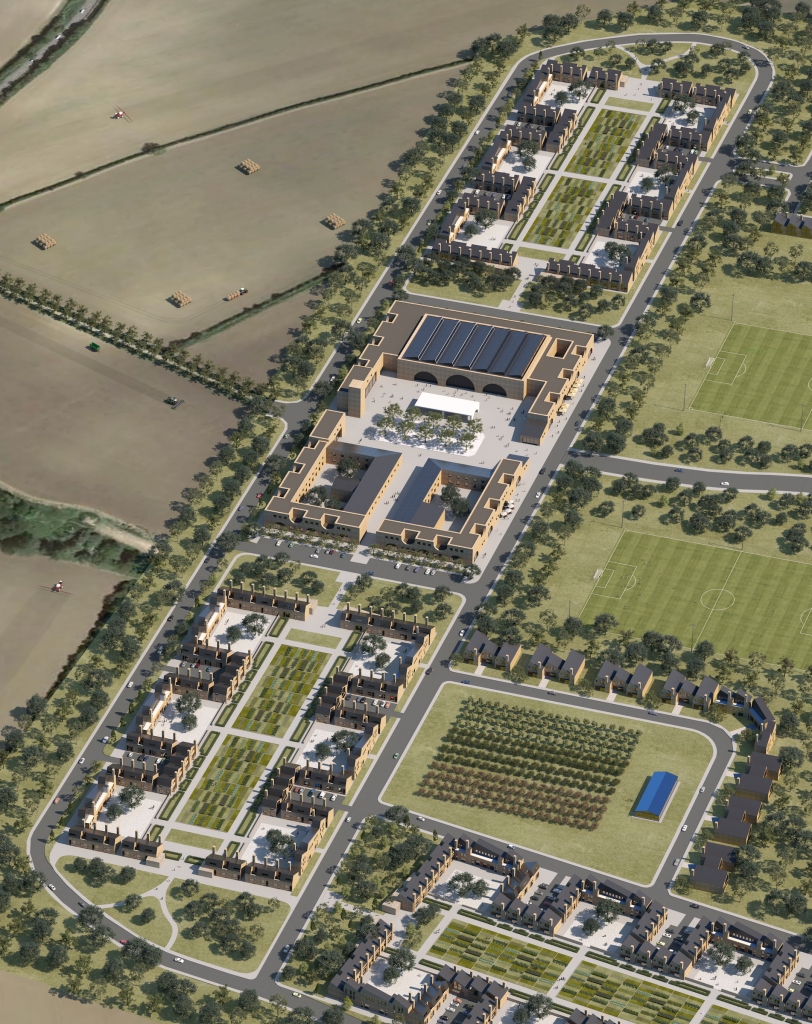
A Vision for a Verdant and Healthy Way of Life
View of the new garden city proposal. This proposal is on the outskirts of Letchworth, one of the original garden suburbs, designed by Unwin and Parker in the early 20th century. The garden city has localized density, but balanced with defined open spaces like courts and plazas. The neighborhood also serves as a food hub for those in the larger vicinity, especially with the new market hall and square.
The neighborhood center
Our version of the new garden city is focused around a neighborhood center and square. This is a gathering space, a place for an outdoor farmers market, a large covered permanent market, and a collection of stores, restaurants, etc. It is at the center, and it the place that all residents and visitors pass through upon arrival.
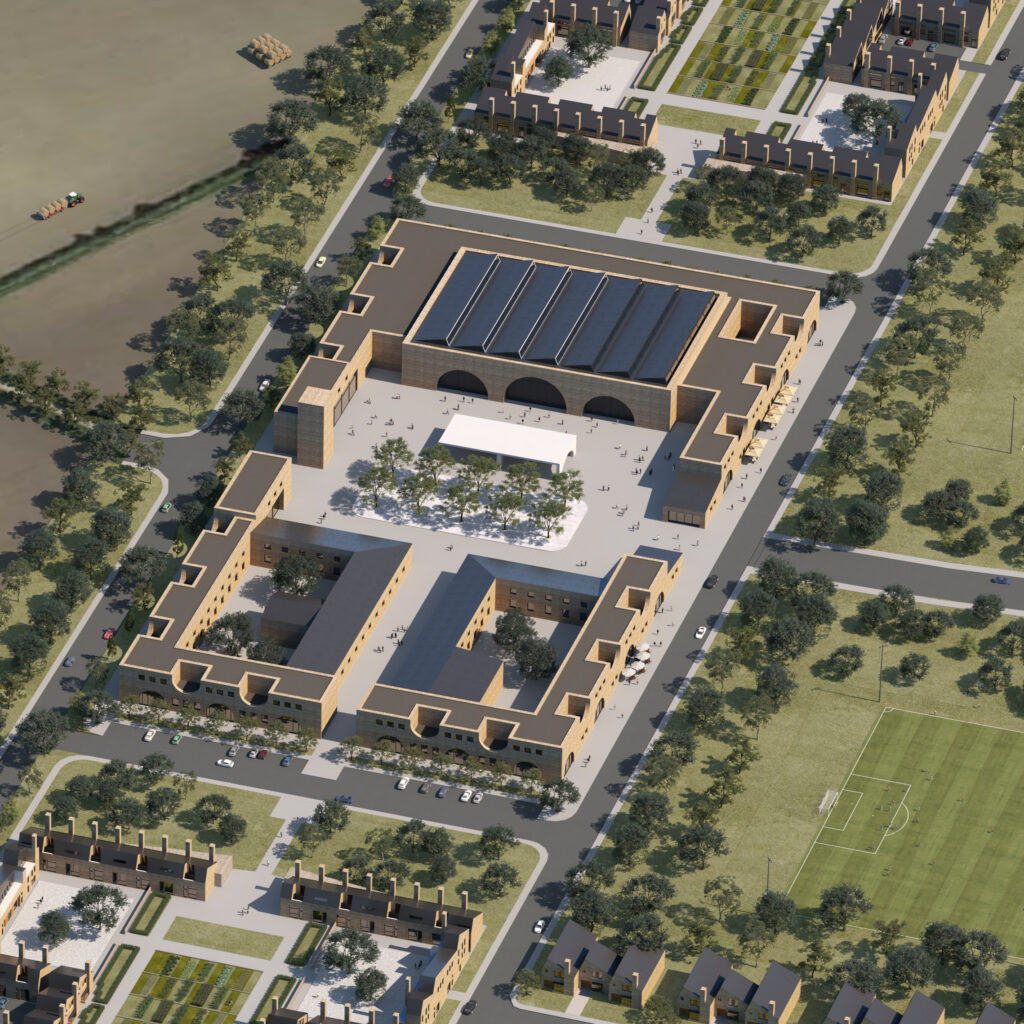
Plan of the neighborhood center
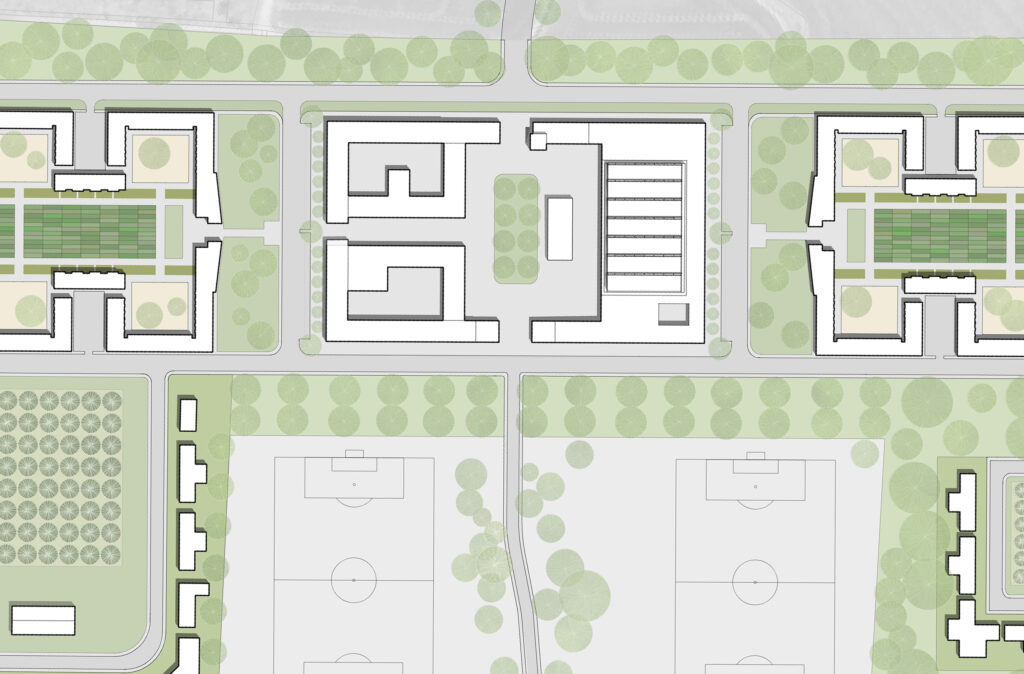
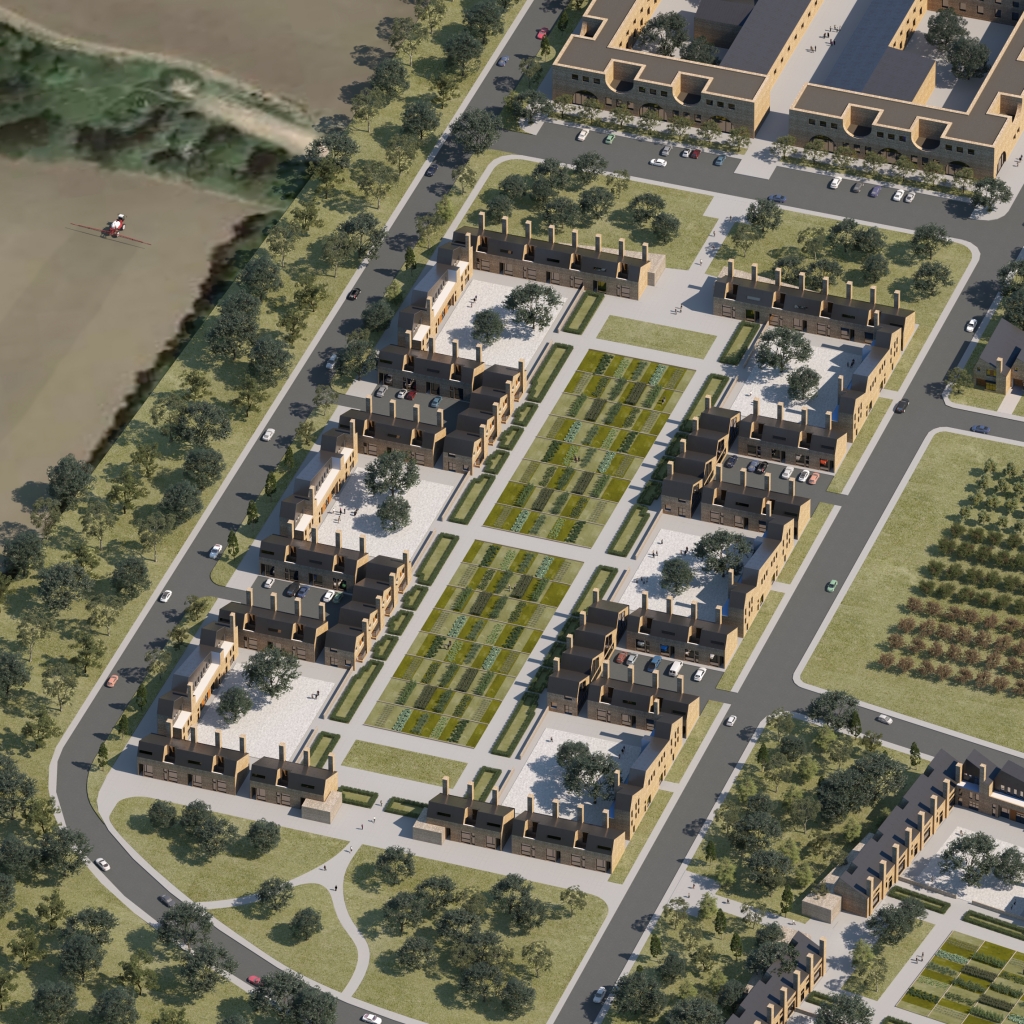
Typical garden cluster
Close up of one of the housing clusters. Each cluster is made up of a series of housing courts- in this case six. Each court has a variety of housing types with an emphasis on shared and adaptable housing types. Cars are kept to the perimeter, and parked in lots between the courts. Together the six housing courts surround a large shared vegetable garden that is managed by the residents.
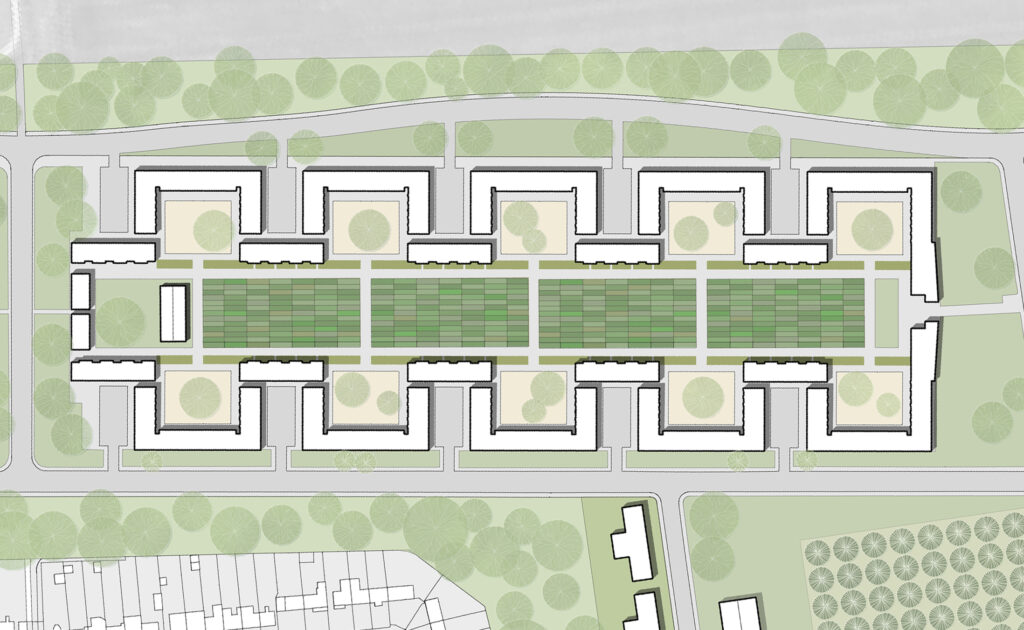
Typical cluster of housing courts around community garden.
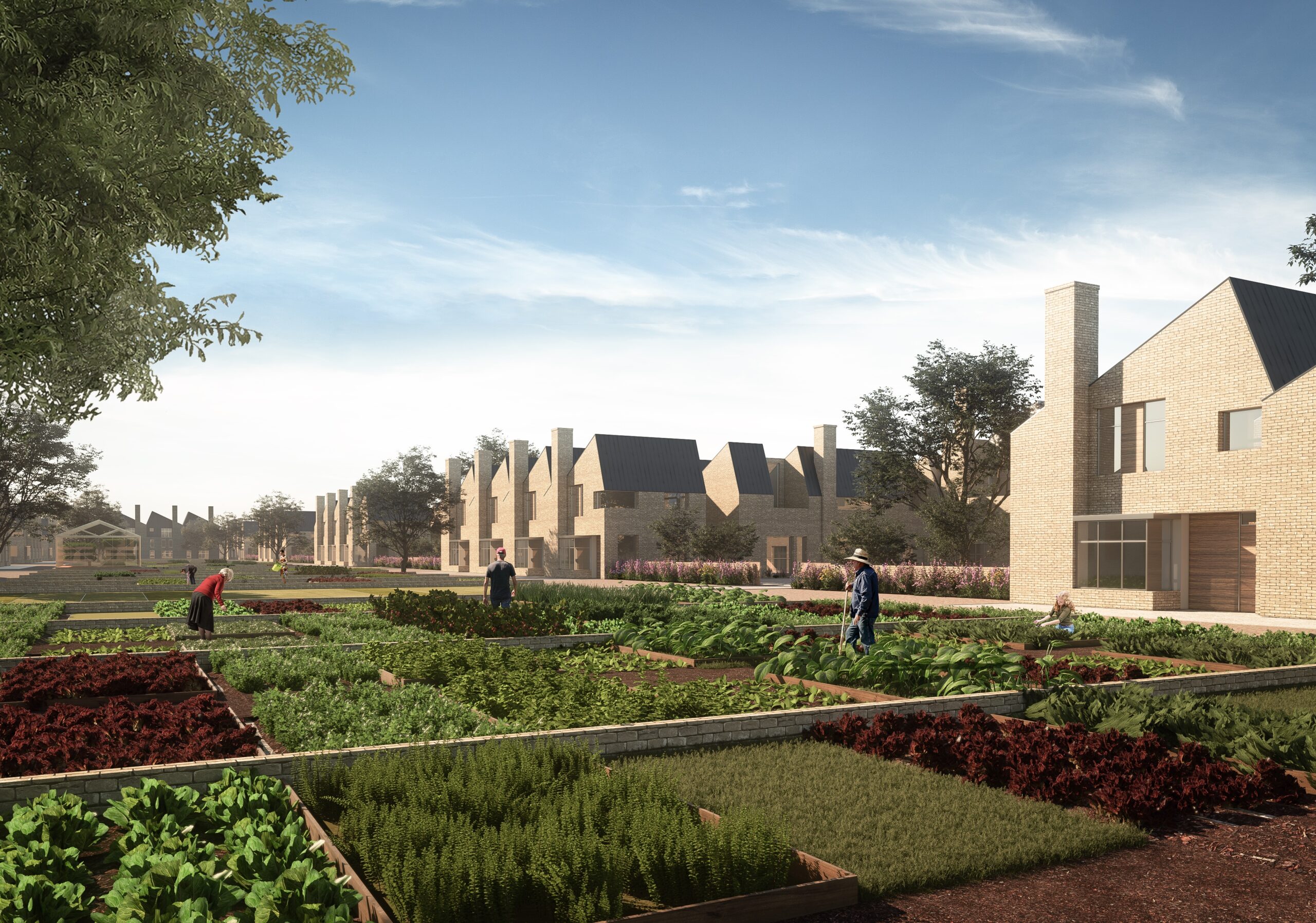
Collective living focused on gardens
Each housing cluster has a large garden that residents maintain as part of an organized co-op. The housing is grouped around these gardens, and while modern, also echos the country houses of stone walls, courtyards, large chimneys, and slate roofs. The model of collective housing proposed is based on the co-living typology, and economically could be organized as a collective or trust, enabling ownership but without the speculative aspects of housing that has proven to be so risky, exclusive, and often destructive.
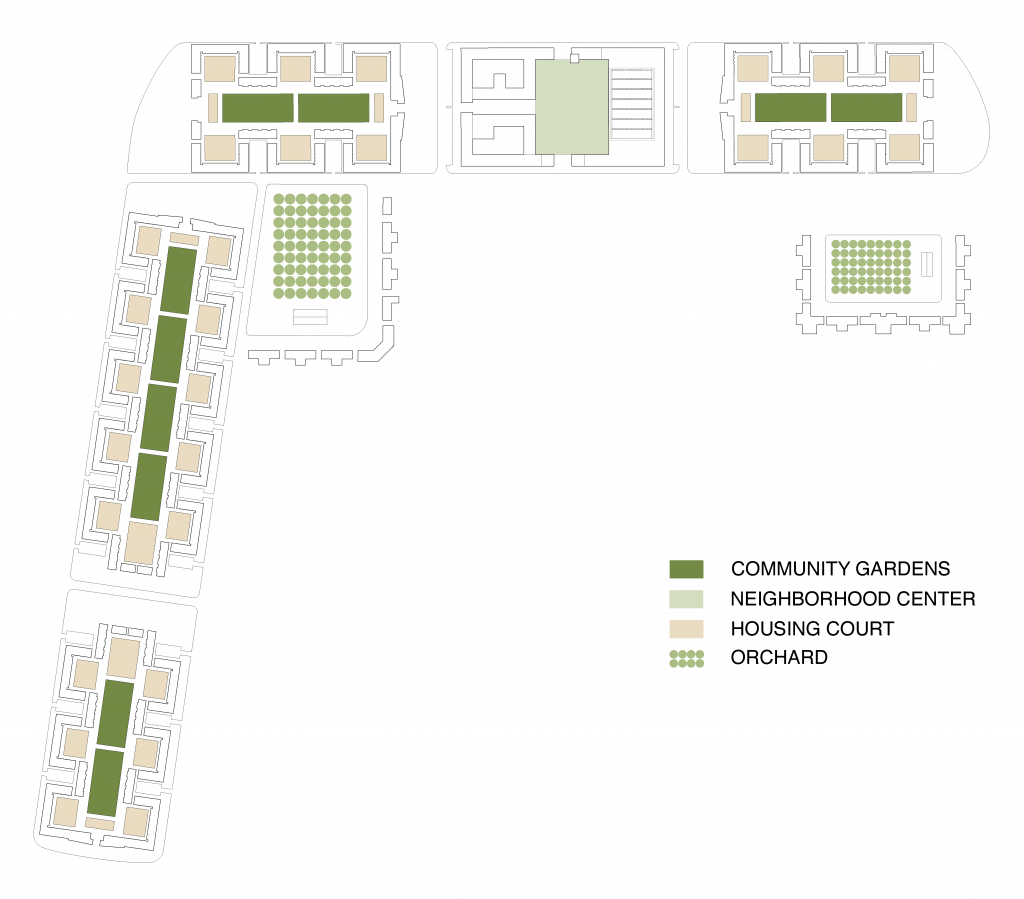
Distribution of Open Space Types
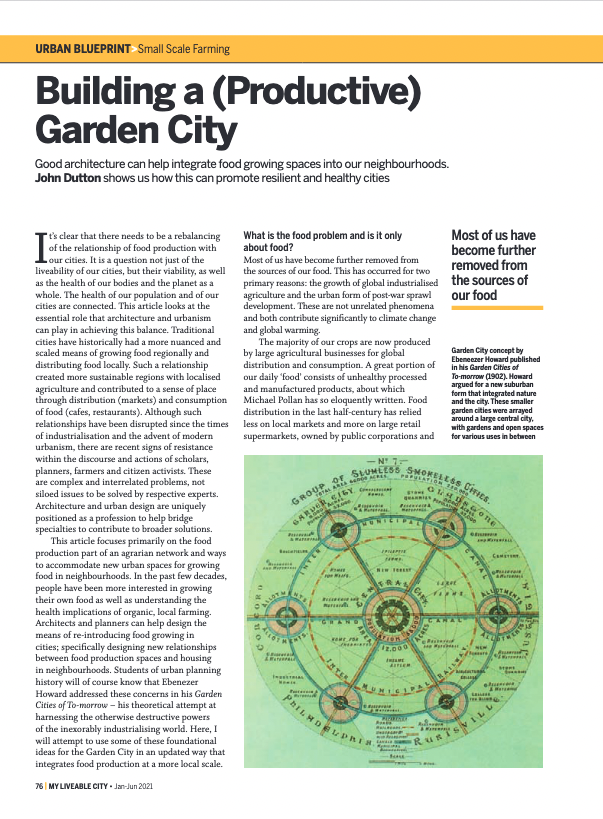
An article on Dutton Architect’s version of the garden city, set in context with the history of the modern garden city, was published in the international urban design journal My Livable City in 2021.


